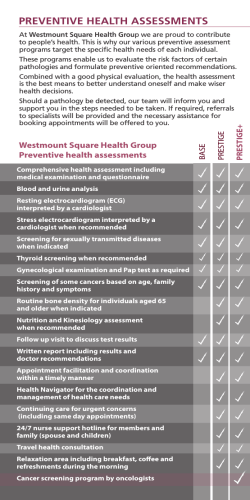
The electron screening puzzle and nuclear clustering
The electron screening puzzle and nuclear clustering C. Spitaleri Department of Physics and Astromomy, University of Catania, Catania, Italy and INFN-Laboratori Nazionali del Sud, Catania, Italy.∗ C. A. Bertulani arXiv:1503.05266v1 [nucl-ex] 18 Mar 2015 Department of Physics and Astromomy, Texas A&M University-Commerce, Commerce, TX 75429, USA (Dated: March 19, 2015) Accurate measurements of nuclear reactions of astrophysical interest within, or close to, the Gamow peak, show evidence of an unexpected effect attributed to the presence of atomic electrons in the target. The experiments need to include an effective “screening” potential to explain the enhancement of the cross sections at the lowest measurable energies. Despite various theoretical studies conducted over the past 20 years and numerous experimental measurements, a theory has not yet been found that can explain the cause of the exceedingly high values of the screening potential needed to explain the data. In this letter we show that instead of an atomic physics solution of the “electron screening puzzle”, the reason for the large screening potential values is in fact due to clusterization effects in nuclear reactions, in particular for reaction involving light nuclei. To understand the energy production in stars, the first phases of the universe and the subsequent stellar evolution, an accurate knowledge of nuclear reaction cross sections σ(E) close to the Gamow energy EG is required [1, 2]. Therefore, recent research in experimental nuclear astrophysics has triggered the development of new theoretical methods and the introduction of new experimental techniques to study thermonuclear reactions at ultra-low energies, either directly or indirectly. In nuclear reactions induced by charged-particles occurring during quiescent burning in stars, EG (in general of order of few keV to 100 keV) is far below the Coulomb barrier EC.B. for the interacting nuclei, usually of the order of few MeV. In particular almost all of the nuclear reactions relevant to solar energy generation are between charged particles and non-resonant reactions [2]. This implies that as energy is lowered the thermonuclear reactions are more dependent on the tunneling with an exponential decrease of the cross section. Therefore, their bare nucleus cross sections σb (E) drops exponentially with decreasing energy. For such reactions it is helpful to remove the rapid energy dependence associated with the Coulomb barrier, by evaluating the probability of s-wave scattering off a point charge. The nuclear physics (including effects of finite nuclear size, higher partial waves, antisymmetrization, and any atomic screening effects not otherwise explicitly treated) is then isolated in the S factor, defined by S(E) = Eσb (E) exp [−2πη(E)] , (1) where σb (E) is the bare nucleus cross section at the center of mass energy E and exp(2πη) is the inverse of the Gamow tunneling factor, which removes the dominant energy dependence of σb (E) due to barrier penetrability, and the Sommerfeld parameter η(E) is defined as: η(E) = e-mail: [email protected] (2) It depends on the atomic numbers Z1 , Z2 of p the colliding nuclei and on their relative velocity v = 2E/µ in the entrance channel and α = e2 /~c the fine-structure constant. Due to this definition, the astrophysical S factor is a slowly varying of E and one can extrapolate S(E) more reliably from the range of energies spanned by the data to the lower energies characterizing the Gamow peak. (For more details see Refs. [2, 3] and references therein). The measured cross-section σs must be corrected for the effect of electron screening arising from the presence of electrons in the target atoms and, possibly, in the (partly)-ionized projectiles [1, 2, 4–6]. The presence of electrons contribute to an enhancement of the measured cross-section compared to that with bare nuclei. Note that a similar screening effect is also present in stellar plasmas, where fully ionized atoms are surrounded by a “sea” of electrons within the so-called Debay-H¨ uchel radius, which in turn depends on conditions of plasma temperature and density that may vary during stellar evolution. Because the electron screening measured in the laboratory differs from one in the plasma, it is important that the measured cross sections of astrophysical interest be the bare one, σb (E), so that plasma screening corrections can be subsequently applied. To parameterize the cross section rise due to the screening effect, an enhancement factor flab (E) is usually introduced. This factor can be described in a simplified way by the equation [1, 5, 6], σs (E) Ss (E) Ue (lab) , (3) flab (E) = = ∼ exp πη σb (E) Sb (E) E (lab) ∗ Z1 Z2 e2 Z1 Z2 α = . ~v v/c where Ue is the electron screening potential in laboratory experiments. A good understanding of the electron (lab) screening potential Ue is essential in order to calculate 2 σb (E) from the experimental σs (E) using Eq. (3). For astrophysical applications it is necessary to know accurately the reaction rates in the stellar plasma, amounting to an average over the particle velocities, hσpl (E)vi. In turn, the effective cross section for stellar plasma, σpl (E), is connected to the bare nucleus cross section and to the stellar electron screening enhancement factor fpl by the relation σpl (E) = σb (E) fpl (E). a)# (4) If σb (E) is measured at the ultra-low energies (Gamow energy EG ) and fpl (E) is estimated within the framework of the Debye-H¨ uckel theory it is possible from Eq. (4) to evaluate the σpl (E) which is the main quantity necessary for astrophysical applications. Unfortunately, direct experiments to measure the cross sections of reactions involving light nuclides have shown that the expected enhancement of the cross section at low energies connected to the screening effect is, in many cases, significantly larger than what could be accounted for by available atomic-physics models [1, 6]. This aspect deserves special attention [3] because one may have a chance to predict the effects of electron screening in an astrophysical plasma only if it is well understood under laboratory conditions (Eqs. (1-3)). To explain the laboratory screening puzzle many experimental [1, 2, 4–6] and theoretical studies have been carried out [3, 7]. In particular many experiments were performed to estimate the systematic errors in the determination of the astrophysical factor. Special investigations were carried out to rule out errors that might be present in the extrapolation of the data to zero energy and in the calculations of the energy loss at these ultra-low energies [1, 2, 4–6]. But up to now, theoretical studies from the point of view of atomic physics have not given a solution to this puzzle. This lack of theoretical understanding can jeopardize the significance of some values of the bare nucleus astrophysical factor Sb (E) extracted from direct measurements . The aim of this letter is to uncover a novel approach to the solution of this puzzle by the introduction of nuclear structure effects without questioning the well known atomic physics effects. The main motivation to justify the introduction of this new idea is explained next. The wave function of a nucleus in the Fock space can be expressed as |ψnucleus i = α |ψA i + β |ψa ψB i + γ |ψc ψD i + · · · , (5) where (α, β, γ) are spectroscopic amplitudes, |ψA i is the wave function of the A nucleons in a non-cluster configuration and |ψa ψB i represents the nuclear wave function in a cluster-like configuration with clusters a and B. Cluster configurations can alter the fusion probabilities because the Coulomb penetrability is reduced, as we show next. A simple evidence is the cross section for 6 Li + 6 Li → 3α reactions at ultra-low energies which are experimentally found to be orders of magnitude larger than calculations based on barrier penetrabilities for 6 Li as non clusterized b)# FIG. 1. a) Barrier penetrabilities (L = 0) calculated according to Eq. (7) for for 6 Li + 6 Li (dashed line, blue), d + 6 Li (dotted line, black) and d + 6 Li in an aligned configuration (solid line, red). b) The figure describes the ratio of the penetrabilities for aligned and non-aligned configuration. nuclei [[8] and references therein]. The penetrability for fusion reactions in channel i can be obtained from P = |ψi (Rout )|2 , |ψi (Rin )|2 (6) where Rin (Rout ) is the distance parameter defining the inside (outside) region of the Coulomb barrier between the nuclei. It is usual to take Rout as infinity and Rin as the touching distance between the nuclei just inside the Coulomb barrier. The basic idea is that whereas the spectroscopic amplitudes of cluster-like structures can be very small, the fusion reactions have an exponential enhancement for cluster-like structures. This is evident for the 6 Li + 6 Li → 3α reaction because its cross section at low energies do not decrease as fast as predicted by the penetrability of 6 Li + 6 Li. Since 6 Li can have a d + α cluster structure, this can be explained by the barrier tunneling of deuterons for which the Coulomb barrier with 6 Li is suppressed. The traditional expression for the penetrability in terms of Coulomb functions FL and GL in the Lth partial wave is [9] PL = where k = √ kR FL2 (η, kR) + G2L (η, kR) (7) 2E/~, µ is the reduced mass, E is the relative 3 energy, η is the Sommerfeld parameter in Eq. (2) and R is the “touching” radius. One can obtain the influence of the cluster structure on the partial cross section as σL = C66 P6 Li+6 Li + C26 Pd+6 Li + · · · , (9) as k → 0, the second term in Eq. (8) dominates at lower energies. Thus, even if the spectroscopic amplitudes are small, the cluster-like configuration enhances the cross section by many orders of magnitude, more than compensating the small configuration probability (preformation factor). The experimental data clearly shows that the fusion cross section in the 6 Li + 6 Li → 3α does not decrease as fast with energy as the penetrability for 6 Li + 6 Li does [8, 10]. If, for simplicity, we take s-wave reaction channels, L = 0, and a touching radius given by R = 1.2(A1/3 + A1/3 ) fm for each reacting system we obtain the results displayed in figure 1a). Evidently, the d + d and d +6 Li penetrabilities are also much smaller than the one for 6 Li + 6 Li at equivalent energies. An additional effect might be responsible for an even larger enhancement of the cross section. When the cluster-like structure in 6 Li aligns so that the two deuterons and the two alphas are located along a line with the two deuterons closer to each other right before the reaction occurs, the barrier for the deuterons is reduced due to its larger distance to the alpha particle. If one assumes a value of d = 2 − 3 fm distance between the clusters one obtains a 0.4 − 0.6 reduction of the Coulomb barrier due to the cluster-like alignment configuration. In figure 1b), we show the ratio between the deuteron penetrability of the aligned and nonaligned configurations assuming a distance between the clusters of d = 2 fm. The alignment due to polarization is assumed to disappear as the relative energy increases beyond the Coulomb barrier energy E C.B. (see, e.g., Ref. [11]). For d = 3 fm and at 100 keV this effect amounts to an enhancement factor of the order of 2 times that of the non-aligned configuration. In Table I and figure 2 we show typical cases of reactions at ultra-low energies where alignments might be relevant: the first is for the case of Z = 1 nuclei reacting with nuclei which do not present an evident nuclear cluster structure, the second is for the case of cluster-like nuclei. The main conclusion drawn from Table 1 is that there is a clear correlation between the cluster structure of nuclei involved in reactions at ultra-low energies and the discrepancy between the value of the upper limit (adiabatic approximation) of the screening potential, Ueadlim , and its experimental value, Ue exp. . The disagreement increases as the cluster structure is more pronounced (larger spectroscopic factor). In particular, Table 1 displays the following evidences in favor of a nuclear structure solution Ueadlim (eV) 2 H(d, t)1 H 14 2 H(d,3 He)n 14 3 He(d,p)4 He 65 3 He(d,p)4 He 120 3 He(3 He,2p)4 He 240 3 He(3 He,2p)4 He 240 6 Li(d,α)4 He 175 6 Li(d,α)4 He 175 6 Li(d,α)4 He 175 6 Li(p,α)3 He 175 6 Li(p,α)3 He 175 6 Li(p,α)3 He 175 7 Li(p,α)4 He 175 7 Li(p,α)4 He 175 7 Li(p,α)4 He 175 9 Be(p,α0 )6 Li 240 9 Be(p,α0 )6 Li 240 10 B(p,α0 )7 Be 340 10 B(p,α0 )7 Be 340 11 B(p,α0 )8 Be 340 11 B(p,α0 )8 Be 340 Reaction (8) where the constants C66 and C26 include the spectroscopic amplitudes and appropriate phase factors for 6 Li + 6 Li and d + 6 Li, respectively. Because P6 Li+6 Li →0 Pd+6 Li TABLE I. The experimental values of the electron screening potentials, Ueexp , and theoretical adiabatic limits, Ue adlim . [1] [2] [3] [4] [5] [6] [7] [8] [9] [10] [11] [12] [13] [14] [15] [16] [17] [18] [19] [20] [21] Ueexp (eV) 13.2±1.8 11.7 ±1.6 109±9 219±7 294±47 305±90 330±120 380±250 320±50 440±150 470±150 355±100 300±160 300±280 425±60 900±50 676±86 430±80 240±200 430±80 472±120 Note Ref. CD2 target CD2 target D2 target 3 He target 3 He target compilation H target LiF target 6 Li target, H target LiF target CD2 target H target LiF target CD2 target, 9 Be target CD2 target, 10 B target CD2 target, 11 B target CD2 target, [12] [12] [13] [13] [14] [2] [15] [15] [16] [15] [15] [17] [15] [15] [18] [19] [20] [21] [10] [21] [22] for the “electron screening” puzzle for the thermonuclear reactions of astrophysical interest: (i) - In all the cases of reactions with cluster-like nuclei with one electron (Z = 1) the experimental electron screening potentials are in agreement, within the experimental errors, with the upper theoretical limit due to atomic energy balance [4] (examples are the cases of d + d and d + p reactions). (ii) - For reactions with cluster-like nuclei with small electron number (Z = 3) and mass numbers 6,7 (examples are p + 6,7 Li) if we consider the central values of the experimental screening potential we observe that these values are more than a factor 1.5 times higher with respect the Ue adlim . (iii) - Reactions with cluster nuclei with electron number Z = 4 − 5 also show a disagreement between the experimental and theoretical upper limit based on energy balance. The discrepancy increases as the cluster structure of the interacting nuclei is more evident (examples are the reactions p + 9 Be and p + 10,11 B). If the solution of the “electronic screening” puzzle would be related to the effects of atomic nature the item (ii) of the list above should have the same value of experimental screening potential for all three reactions (p + 6 Li, d, p + 6 Li and 7 Li reactions) because of the isotopic invariance. In fact, in the case of the reaction p + 7 Li 4 there is a deviation of the central value of experimental screening potential by about 250 eV, while for other cases there is a deviation of 165 eV (d + 6 Li) and 180 eV (p + 6 Li). If we consider the case of the reactions in the group (iii) we find that the differences found with the atomic screening predictions are 90 eV for p + 10 B, and 90 − 130 eV for the reaction 11 B + p. For these latter cases, in order to draw more definitive conclusions, new measurements are needed with larger precision to reduce the margin of uncertainty. In any case, these results are not in agreement with the atomic description of the screening of thermonuclear reactions in the laboratory. The main idea introduced in this work is that at the very low energies of nuclear reactions in stellar environments, the condition set by Eq. (9) may occur due to the presence of clusters in the interacting nuclei. The Coulomb penetrability is sup- pressed with decreasing energy of interacting nuclei due to clustering and polarization. Therefore, the absolute values of astrophysical factors obtained through extrapolation should be reviewed to include not only atomic physics but also nuclear physics effects to correct for the increase of the astrophysical S-factor as the energy decreases. Indeed, in Eq. (1) it is implicitly assumed that wave function for the relative motion of the nuclei is expressed only by the first term of Eq. (5) (α = 1). Therefore the Gamow factor exp(2πη) is calculated taking into account that in Eq. (5) no cluster structures exist, i.e. β = γ = 0. Only in the situation that clusters can be formed and some sort of polarization occurs, the Gamow factor can compensate for the drastic suppression of the cross section with decreasing energy in many of the reactions of astrophysical relevance. These conclusions, to be confirmed by further more precise experiments, will lead to a critical review of the actual values of the electronic screening potentials. This problem also appears to exist with direct experiments at higher energies. From the considerations expressed in the present work we can state that the discrepancy between the experimental electron screening potential values and the upper theoretical values (adiabatic limit) may be linked to nuclear structure effects and not to hitherto unknown and speculative processes in atomic physics. We propose that new theoretical and experimental studies in the field of nuclear astrophysics at very low energies should be carried out. In particular, a more comprehensive theoretical reaction method that takes into account polarization and alignment of cluster-like nuclei should be pursued. New and more precise measurements to confirm this theory should be carried out concomitantly. The nuclear reactions involving 6 Li and 7 Li, such as the 6 Li + 6 Li, 7 Li + 7 Li, 7 Li + 6 Li , 9 Be + 3 He, 9 Be + 7 Li should be of particular interest to prove the relevance of such additional nuclear structure effects in thermonuclear reactions. This work has been partially supported by the Italian Ministry of University MIUR under the grant “LNSAstrofisica Nucleare (fondi premiali)” and the U.S. NSF Grant No. 1415656, and U.S. DOE grant No. DE-FG0208ER41533. [1] C. Rolfs and W. Rodney, Cauldrons in the Cosmos (The University of Chicago, 1988) p. 561. [2] E.G.Adelberger and al., Review of Modern Physics 195, 83 (2011). [3] F.C.Barker, Nucl. Phys. A 707, 277 (2002). [4] H. Assenbaum, K. L. Langanke, and C. Rolfs, Z. Phys. A 327, 461 (1987). [5] G. Fiorentini, R. Kavenagh, and C.Rolfs, Z. Phys. A 350, 289 (1995). [6] F. Strieder, C. Rolfs, C. Spitaleri, and P. Corvisiero, Naturwissenschaften 88, 461 (2001). [7] C.Angulo and P.Descouvemont, Nucl. Phys. A 733, 639 (1998). [8] M. Lattuada, F. Riggi, D. Vinciguerra, C. Spitaleri, G. Vourvopulos, and DJ.Miljani´c, Z. Phys. A-Atomic Nuclei 330, 183 (1988). [9] C.A.Bertulani, Nuclear Physics in a Nutshell, Vol. ISBN13:978-0-691-12505-3 (Princeton University-Press, Princeton,NJ, 2007) p. 1. [10] C.Spitaleri, A.Tumino, M.Lattuada, S.Tudisco, M.Lattuada, F.Riggi, DJ.Miljani´c, M.Milin, and N. Soic, Phys.Rev.C in press, 1 (2015). [11] “10th International Conference on Clustering Aspects of Nuclear Structure and Dynamics”, Journal of Physics: Conference Series 436 (2013). [12] A.Tumino, R.Spart´ a, C.Spitaleri, A.M. 1000 exp Ue (eV) [16] [7-15] 500 [17] [18-21] [5-6] [4] [ ] * [3] [1-2] 0 0 100 200 300 400 Uadlim (eV) e FIG. 2. Experimental electron screening potential Ueexp corresponding to the main reactions present in the literature as function of the theoretical adiabatic limit of the electron screening potential Ueadlim . The vertical bars are the total uncertainties of the measurements reported in literature. The numbers in brackets correspond to those in Table I. 5 [13] [14] [15] [16] Mukhamedzhanov, S. Typel, R.Pizzone, E.Tognelli, V. Burian, V. Kroha, Z. Hons, M.La Cognata, L. Lamia, J. Mrazek, S. Piskor, P.D.Prada Moroni, G.G.Rapisarda, S.Romano, and M.L.Sergi, The Astrophysical Journal 96, 785 (2014). M. Aliotta, F.Raiola, G.Gyrky, A. Formicola, R. Bonetti, C. Broggini, L. Campajola, P. Corvisiero, H. Costantini, A. D’Onofrio, Z. Fulop, G.Gervino, L. Gialanella, A. Guglielmetti, C. Gustavino, G.Imbriani, M. Junker, P.G.Moroni, A. Ordine, P. Prati, V.Roca, D. Rogalla, C. Rolfs, M.Romano, F. Schumann, E. Somorjai, O.Straniero, F. Strieder, F. Terrasi, H.P. Trautvetter, and S.Zavatarelli, Nucl. Phys. A 690, 790 (2001). R. Bonetti, C. Broggini, L.Campajola, P.Corvisiero, A.D’Alessandro, M.Dessalvi, A.D’Onofrio, A. Fubini, G. Gervino, L. Gialanella, U. Greife, A. Guglielmetti, C. Gustavino, G. M. Junker, P. Prati, V. Rocca, C. Rolfs, M. Romano, F. Schuemann, F. S. F. Terrasi, H.P. Trautvetter, and S. Zavatarelli, Z. Phys. A 350, 289 (1999). S.Engstler, G.Raiman, C.Angulo, U.Greife, C.Rolfs, U.Schroeder, E.Somoraj, B.Kirch, and K.Laganke, Z. Phys. A 187, 471 (1992). A.Musumarra, R. G. Pizzone, S. Blagus, M. Bogovac, P. Figuera, M. Lattuada, M. Milin, D. Miljani´c, M. G. Pellegriti, D.Rendic, C. Rolfs, N. Soi´c, C. Spitaleri, [17] [18] [19] [20] [21] [22] S. Typel, H. H. Wolter, and M. Zadro, Phys.Rev.C in press, 1 (2001). L.Lamia, C.Spitaleri, R.G. Pizzone, E.Tognelli, A.Tumino, S.Degl’Innocenti, P.G.Prada Moroni, M.La Cognata, L.Pappalardo, and M.L.Sergi, Astrophysical Journal 768, 65 (2013). L.Lamia, C.Spitaleri, M. La Cognata, and R.G. Pizzone, A.&A. 541, A 158 (2012). D. Zahnow, C. Rofs, S.Schmidt, and H.P.Trautvetter, Z. Phys. A 359, 211 (1997). Q.-G. Wen, C.-B. Li, S.-H. Zhou, Q.-Y. Meng, J. Zhou, X.-M. Li, S.-Y. Hu, Y.-Y. Fu, C. Spitaleri, A. Tumino, R.G.Pizzone, and G.G. Rapisarda, Phys. Rev. C 78, 035805 (2008). C.Angulo, S.Engstler, G.Raiman, C.Rolfs, W.H.Schhulte, and E.Somorjai, Z. Phys. A 231, 345 (1993). L.Lamia, C.Spitaleri, V.Burjan, N.Carlin, S.Cherubini, V.Crucill´ a, M.Gameiro Munhoz, M.Gimenez Del Santo, M.Gulino, Z.Hons, G.G.Kiss, V.Kroha, S. Kubono, M. L. Cognata, C.Li, J. Mrazek, A. Mukhamedzhanov, R.G. Pizzone, S.M.R. Puglia, Q.Wen, G.G.Rapisarda, C. Rolfs, S. Romano, M.L. Sergi, E. Somorjai, F.A.Souza, F.A.Szanto de Toledo, G.Tabacaru, A.Tumino, Y.Wakabayashi, H.Yamaguchi, and S.H.Zhou, Journ. Phys. G 39, 015106 (2012).
© Copyright 2025









